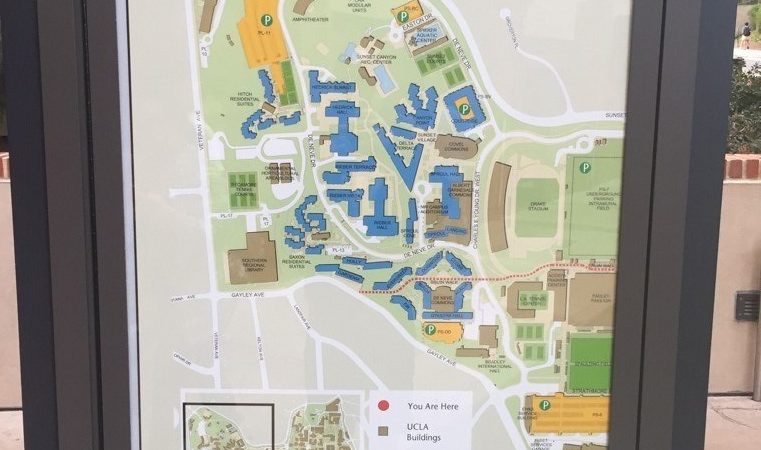
By Griffin Nicholson
After meeting with Jennie Wung from UCLA Environmental Health and Safety last week, we received a list of work orders concerning rodents on campus from Jennie which goes back to 2008. Using these work orders, we are planning a GIS of rodent hotspots on campus based on the locations of the work orders and their descriptions. We will be using a map similar to the one pictured above where we can map the different buildings the work orders came from. We are also hoping to receive more data from Joshua Witt, the Executive Steward of UCLA Dining Services, when we meet with him again. We discovered Josh presented maps of trash cans, vending machines, bait stations, and dining facilities at a convention in the past. Josh’s data will be beneficial in finding the factors leading to the rodent hotspots. Our goal is to use the GIS to determine the areas with the largest amount of rodent incidents and the factors which may contribute to the rodents in the area.
We are also preparing for our hearing for the Green Initiative Fund next week in which we hope to receive funds to purchase a Bigbelly Solar compactor. The goal is to have a trial run for the compactor to record its effectiveness in lowering trash overflow and rodent problems. We hope favorable data and surveys can be used to convince UCLA to purchase more Bigbelly compactors campus wide. The GIS mapping will be helpful in determining the location for our trial compactor in a location where rodent incidents may be more prevalent. To place the Bigbelly compactor, we will need necessary approvals. We are hoping to also go over what approvals we may need during our meeting with Josh as we hope to place the compactor on the Hill.
